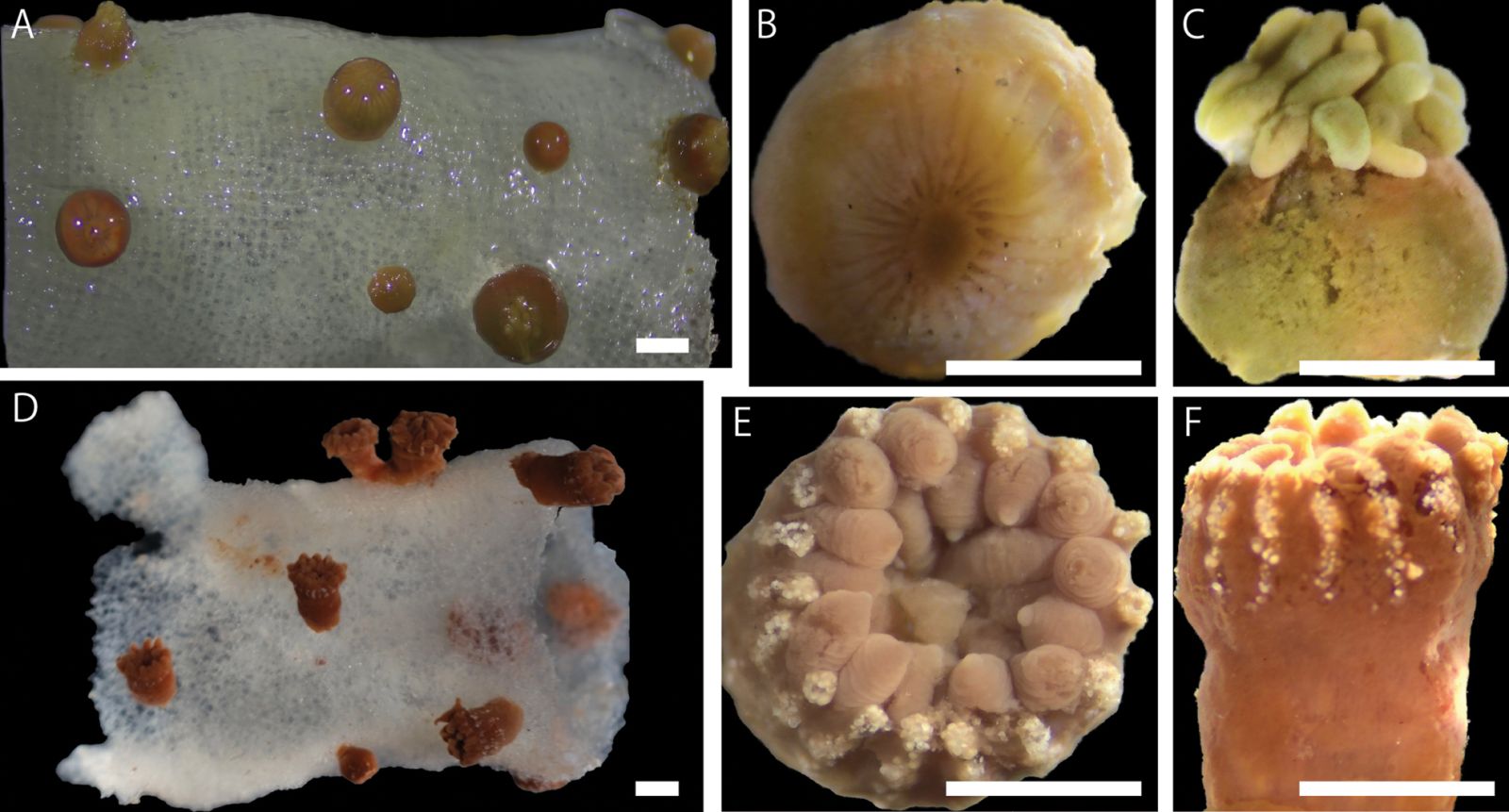Follow us on Google News (click on ☆)

A) Preserved polyps of Vitrumanthus flosculus sp. nov. attached to Farrea sp.
B, C) Close-up of a preserved polyp.
D) Preserved polyps of Churabana kuroshioae attached to Pararete sp.
E, F) Close-up of a preserved polyp.
Scale bars: 1.0 mm (A–C); 2.0 mm (D–F).
During a scientific mission on the Nishi-Shichito Ridge, south of Japan, a submarine robot captured images and samples of this unknown species. Living at a depth of 400 meters (1,312 feet), these organisms measure just a few millimeters and are distinguished by their close relationship with glass sponges. This discovery highlights the importance of seamounts as true biodiversity hotspots.
An astonishing symbiosis and a revealed genetic identity
Vitrumanthus flosculus lives in symbiosis with glass sponges, clinging to their surface to feed on nutrients carried by currents. Its 22 to 26 dark tentacles give it the appearance of a small flower, hence its Latin name meaning "little flower." This mutualistic relationship remains a subject of study for researchers.
Through morphological and genetic analyses, scientists have confirmed that this species belongs to the Parazoanthidae family. Sequencing its mitochondrial genome has provided a better understanding of its recent evolution. These studies have also revealed close ties with a related species, Churabana kuroshioae.
An ecosystem to protect
The Nishi-Shichito Ridge, classified as a marine protected area since 2020, is home to exceptional biodiversity. Researchers emphasize the need to preserve these habitats from destructive activities such as intensive fishing. This discovery underscores the importance of scientific exploration in guiding conservation policies.
Although Vitrumanthus flosculus has only been observed on one seamount, scientists believe it could be present elsewhere in the northwestern Pacific. This discovery paves the way for new research on deep-sea ecosystems and their little-known inhabitants.